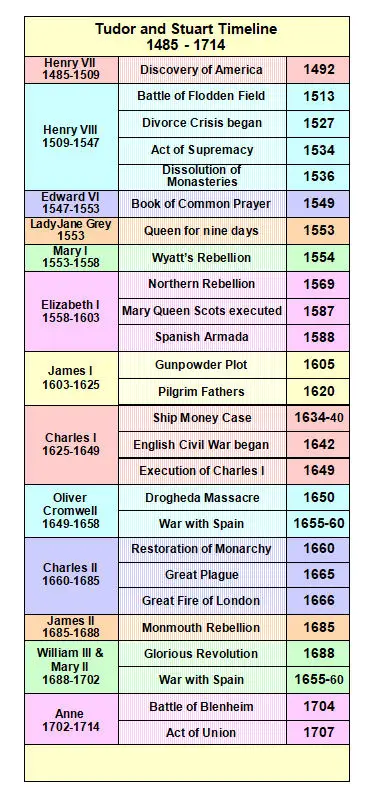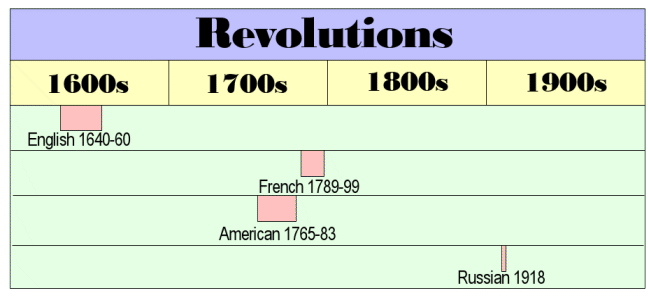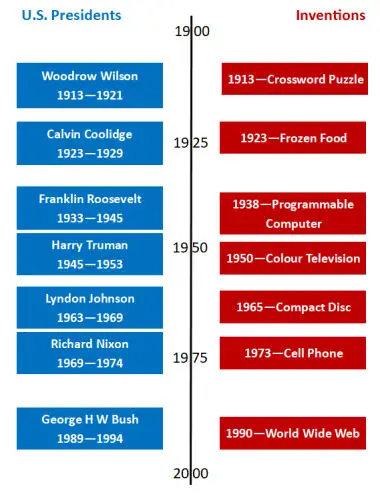Historians use timelines to create an ordered view of history. By sequencing events into chronological order on a timeline, it becomes easier to see causes and effects of events. Timelines can be linear or comparative.
Linear Timeline
Linear timelines detail events that happened within a given time frame. This time frame could be a person’s lifetime, a period in history or a single event. The events can be arranged vertically or horizontally. The vertical format below shows some key events in the Tudor and Stuart periods.

The format makes it easy to see that Henry VII was the first Tudor King and that Queen Anne was the last Stuart monarch. Similarly, you can see at a glance that the Act of Supremacy was passed in 1534 and the Act of Union in 1707. It is also very easy to see that the Gunpowder Plot happened before the Great Fire of London.
The horizontal format below shows revolutions that happened in history between the 1600’s and the 1900’s.

Looking at this timeline it is easy to see that the English Revolution, also known as the English Civil War, lasted longer than the Russian Revolution. It is also easy to see which was the earliest revolution and which the latest.
Comparative Timeline
A comparative timeline compares two or more topics across the same date range. They could be used to highlight similarities and differences between two countries. Or they might compare developments in different areas across a given date range.

The comparative timeline above shows U.S. Presidents at the time of some twentieth century inventions. It is very easy to see who was President when the items on the right were invented.
Citation Information:
Heather Y Wheeler. (2020 – 2021). Understanding a Timeline. Available: https://www.historykeyskills.com/understanding-a-timeline/. Last accessed June 19th, 2025
